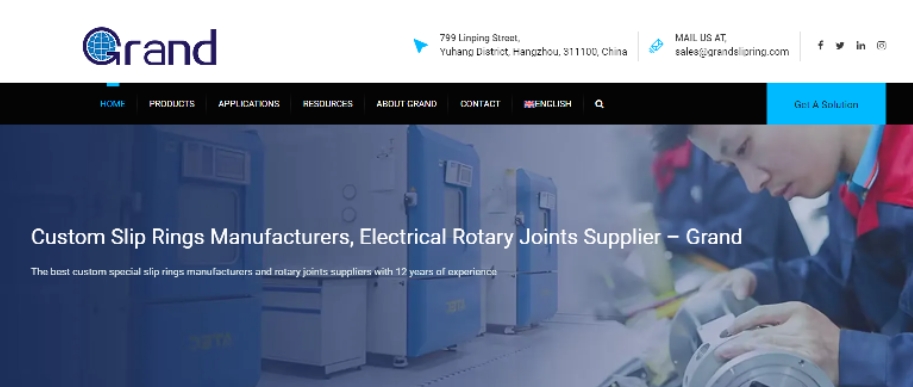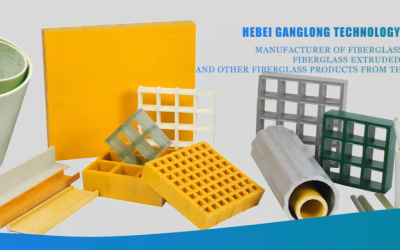Slip rings, also known as rotary electrical joints, are essential components in modern technology that enable the transmission of power and electrical signals from a stationary to a rotating structure. The basic function of slip rings is to maintain a continuous electrical connection while allowing rotational movement, which is critical in various machinery and devices. Slip rings are significant in a wide range of applications, including wind turbines, medical imaging equipment, and industrial machinery. They ensure uninterrupted power supply and signal transmission, enhancing the efficiency and reliability of these systems. For specialized needs, custom slip rings are designed to meet specific requirements, offering tailored solutions that cater to unique electrical and mechanical specifications, thereby improving overall system performance.

Types of Slip Rings
Sealed Slip Rings
Sealed slip rings are designed to protect the internal components from environmental factors such as dust, moisture, and chemicals. These slip rings are encased in a protective housing that prevents contaminants from entering and damaging the delicate internal parts. The primary characteristic of sealed slip rings is their robustness and ability to operate in harsh environments. They are often used in applications where the equipment is exposed to outdoor conditions or industrial settings where contaminants are prevalent.
The benefits of sealed slip rings include extended lifespan, reduced maintenance needs, and reliable performance under challenging conditions. These slip rings are ideal for use in wind turbines, marine equipment, and outdoor surveillance systems. The sealing ensures that the slip ring can operate smoothly without the risk of contamination, which could lead to electrical failures or mechanical breakdowns.
Packaged Slip Rings
Packaged slip rings, also known as compact or integrated slip rings, are designed for applications that require a complete, ready-to-install solution. These slip rings come pre-assembled with all necessary components, making them easy to integrate into existing systems. The key advantage of packaged slip rings is their convenience and ease of installation.
Packaged slip rings are commonly used in applications where space is limited and a compact solution is needed. They are often found in medical imaging equipment, robotics, and automation systems. The pre-packaged nature of these slip rings ensures that they are tested and optimized for performance, reducing the time and effort required for installation and setup.
Capsule Slip Rings
Capsule slip rings are small, compact slip rings designed for applications that require high performance in a limited space. These slip rings are typically used in devices where space is at a premium, such as in medical devices, instrumentation, and compact machinery. The design features of capsule slip rings include their small size, lightweight construction, and high rotational speed capabilities.

One of the key applications of capsule slip rings is in medical devices, where precise and reliable signal transmission is crucial. For example, in imaging equipment like MRI and CT scanners, capsule slip rings enable the transfer of data and power while allowing continuous rotation of the imaging components. The compact size and high efficiency of these slip rings make them ideal for such applications.
In robotics, capsule slip rings facilitate the smooth transmission of signals and power to rotating joints and arms, ensuring that the robots can perform complex tasks with precision. The use of capsule slip rings in these applications highlights their importance in maintaining performance while minimizing space and weight.
Industrial Slip Rings
Industrial slip rings are designed for heavy-duty applications that require robust and reliable performance. These slip rings are built to withstand the rigors of industrial environments, including high temperatures, vibration, and heavy loads. The primary characteristics of industrial slip rings are their durability and ability to handle high power and signal transmission requirements.
Industrial slip rings are commonly used in manufacturing equipment, cranes, and large machinery where continuous rotation and high power transmission are necessary. The construction of these slip rings ensures that they can operate efficiently under demanding conditions, providing reliable performance and reducing downtime.
The performance of industrial slip rings is crucial for maintaining the efficiency and productivity of industrial operations. By providing a reliable means of transmitting power and signals, these slip rings help ensure that machinery operates smoothly and without interruption.
Custom Slip Rings
Custom slip rings are tailored solutions designed to meet specific requirements of unique applications. These slip rings are customized based on the electrical, mechanical, and environmental needs of the application. The customization process involves working closely with manufacturers to design a slip ring that fits the precise specifications required.
The benefits of custom slip rings include enhanced performance, the ability to meet unique electrical and mechanical specifications, and improved reliability in challenging environments. Custom slip rings are ideal for applications that have specialized requirements, such as in aerospace, defense, and advanced robotics.
For example, in aerospace applications, custom slip rings may be designed to withstand extreme temperatures, high altitudes, and rigorous vibration conditions. In defense applications, custom slip rings might need to provide secure and reliable data transmission in harsh environments.
The process of creating custom slip rings involves detailed analysis and collaboration to ensure that the final product meets all the necessary requirements. This tailored approach results in slip rings that offer optimal performance and reliability for specific applications.
Slip rings are versatile components used in a variety of applications to enable the transmission of power and signals from stationary to rotating parts. Understanding the different types of slip rings, including sealed, packaged, capsule, industrial, and custom slip rings, is crucial for selecting the right solution for your needs. Each type of slip ring offers unique characteristics and benefits, making them suitable for specific applications. By choosing the appropriate slip ring, you can ensure reliable performance, reduce maintenance, and enhance the efficiency of your equipment.
Detailed Series of Slip Rings
Series Overview
Slip rings are crucial components in various rotating systems, enabling the transfer of power and signals from a stationary to a rotating structure. The detailed series of slip rings offer a comprehensive range of amperage and voltage specifications to cater to diverse application needs. These specifications ensure that the slip rings can handle different power levels and signal types, making them versatile for various industries.
The amperage range typically varies from low-current applications of around 3 amps to high-power requirements of up to 30 amps or more. Voltage specifications can also differ significantly, ranging from low voltage, such as 150 VDC, to high voltage, such as 600 VAC. This diversity in specifications allows users to select the appropriate slip ring for their specific power and signal transmission needs, ensuring efficient and reliable operation.
Key Features
The detailed series of slip rings are distinguished by their superior material and build quality, ensuring durability and long-lasting performance. High-quality materials, such as gold and silver contacts, are commonly used to enhance conductivity and reduce wear. The build quality is designed to withstand various environmental conditions, ensuring that the slip rings can operate effectively in both indoor and outdoor settings.
A key feature of these slip rings is their advanced contact technology. This technology minimizes electrical resistance and wear, providing reliable and efficient signal transmission. Gold-on-gold contact technology is particularly notable for its low electrical noise and high signal integrity, making it ideal for applications that require precise data transmission.
Electrical noise reduction is another critical aspect of these slip rings. Low electrical noise ensures that signals are transmitted with minimal interference, which is essential for applications in medical imaging, communications, and other fields where signal clarity is paramount.
Applications of Slip Rings
Use in Rotating Devices and Machinery
Slip rings are integral components in numerous rotating devices and machinery, enabling the transmission of power and electrical signals from stationary parts to rotating components. They facilitate continuous rotation without the risk of tangled wires, ensuring that equipment can operate smoothly and efficiently. Slip rings are found in a variety of applications, ranging from industrial machinery and wind turbines to medical imaging equipment and robotic systems.
In industrial settings, slip rings are used in manufacturing machines, rotary tables, and cranes. These devices require uninterrupted power and signal transmission to function correctly, and slip rings provide the necessary connectivity. In wind turbines, slip rings allow for the transfer of power generated by the rotating blades to the stationary part of the system, ensuring that energy can be harnessed effectively. In medical imaging equipment, such as MRI and CT scanners, slip rings enable the rotation of imaging components while maintaining a continuous electrical connection, which is critical for obtaining clear and accurate images.
Importance in Signal and Power Transmission
Slip rings play a vital role in ensuring the seamless transmission of signals and power in rotating systems. They are designed to maintain consistent contact between rotating and stationary parts, minimizing electrical resistance and ensuring that power and data signals are transmitted without interruption. This is particularly important in applications where precision and reliability are critical.
The ability of slip rings to transmit both power and data signals makes them essential in various high-tech applications. For example, in communication systems, slip rings ensure that data can be transmitted continuously, even as the components rotate. This is crucial for maintaining high-speed data links and ensuring the reliability of communication networks. In automated machinery, slip rings transmit control signals that dictate the machine’s operations, ensuring that it performs tasks accurately and efficiently.
Examples of Industries Benefiting from Slip Ring Technology
Numerous industries benefit from the use of slip ring technology, including manufacturing, energy, healthcare, and entertainment. In the manufacturing industry, slip rings are used in various machines and robotic systems that require continuous rotation and precise control. They enable these machines to operate efficiently, increasing productivity and reducing downtime. Ethernet slip rings, in particular, are crucial in manufacturing for transmitting high-speed data along with power, ensuring seamless communication and control in automated systems.
The energy industry, particularly in the operation of wind turbines and other renewable energy systems, relies on slip rings to transmit power from the rotating parts of the turbine to the stationary grid. This technology is crucial for harnessing renewable energy and integrating it into the power supply. Ethernet slip rings can also be used to transfer real-time data from sensors located on the rotating parts of the turbine, facilitating better monitoring and management of energy production.

In healthcare, slip rings are essential in medical imaging equipment, such as MRI and CT scanners, as they enable the rotation of imaging components while maintaining a continuous electrical connection. This ensures that high-quality images can be obtained for accurate diagnosis and treatment. Ethernet slip rings are particularly beneficial in these applications as they support high-speed data transfer, which is vital for the precise and timely processing of imaging data.
The entertainment industry also benefits from slip ring technology, particularly in stage lighting and rotating platforms used in theaters and concerts. Slip rings allow for the smooth and continuous rotation of these platforms, enhancing the visual experience for audiences. Ethernet slip rings are especially useful in this sector as they enable the transmission of both power and high-speed data, ensuring that complex lighting and sound systems can be controlled efficiently and in real-time during performances.
Overall, slip ring technology, including ethernet slip rings, provides critical support across various industries by ensuring continuous power and data transmission in rotating systems, enhancing efficiency, reliability, and performance.
Choosing the Right Slip Ring
Factors to Consider
When selecting a slip ring, several factors need to be considered to ensure that it meets the specific requirements of the application. These factors include electrical requirements, environmental conditions, and mechanical constraints.
Electrical Requirements: It is essential to consider the current and voltage ratings of the slip ring to ensure that it can handle the electrical load of the application. This includes understanding the power requirements and the type of signals that need to be transmitted.
Environmental Conditions: The operating environment plays a significant role in the selection of a slip ring. Factors such as temperature, humidity, and exposure to dust or chemicals can affect the performance of the slip ring. Sealed slip rings are ideal for harsh environments as they are designed to protect the internal components from contaminants.
Mechanical Constraints: The physical size and design of the slip ring must be compatible with the equipment in which it will be installed. This includes considering the rotational speed (RPM), mounting options, and space constraints.
Customization Options for Unique Applications
In many cases, standard slip rings may not meet the specific needs of a particular application. Custom slip rings offer tailored solutions designed to address unique requirements. Customization can include modifications to the slip ring’s electrical and mechanical specifications, such as the number of circuits, current and voltage ratings, and physical dimensions.
For example, in aerospace applications, custom slip rings may be designed to withstand extreme temperatures, high altitudes, and rigorous vibration conditions. In the defense industry, custom slip rings might need to provide secure and reliable data transmission in harsh environments.
Working with manufacturers to develop custom slip rings involves a detailed analysis of the application’s requirements and close collaboration to ensure that the final product meets all necessary specifications. This tailored approach results in slip rings that offer optimal performance and reliability, enhancing the overall efficiency and effectiveness of the equipment.
Slip rings are critical components in various rotating systems, ensuring the seamless transmission of power and signals. Understanding the different applications of slip rings and the factors to consider when choosing the right slip ring is essential for achieving reliable and efficient operation. Custom slip rings provide tailored solutions for unique applications, ensuring that specific requirements are met and enhancing overall system performance.








